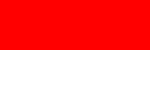The Inclusive Islamic Model in Indonesia as a Critique Study of Samuel P. Huntington's "Clash Of Civilizations" Theory
Model Islam Inklusif Di Indonesia Sebagai Kajian Kritik Terhadap Teori “Clash Of Civilizations” Samuel P. Huntington
Abstract
This article aims to explore a phenomenon called Islam Nusantara in Indonesia, as a critical study toward the discussion of islam dimension in the book entitled “ The Clash Of Civilization and The Remaking of World Order “ written by Samuel P. Huntington. As for the result, it shows some weakness of the theory of clash of civilization which is mainly seen either from theoretical or historical approach. There is an inconsistent use of realism approach in its theoretical building. Beside that, Huntington looks confused on choosing between the geographical or religious ground to identify the so called civilization. Lots of conflicts in the world are not based on differences among civilization. The fact that Huntington only deals with Islam in Middle-East is very problematic. It creates false impression as if Islam is merely represented by one region or cultural domain. Our case is trying to prove that the model of Islam Nusantara could potentially clarify some misleading understandings about Islam in his theses. We find that the phenomenon of Islam Nusantara is quite contradictive to Huntington’s argument about Islamic dimension. Islam could adapt well to various local cultures and modernity at some degree. The practices of Islam Nusantara in Indonesia, the largest moeslem country in the world, has been providing different face and dynamic of Islam. We argue that the model of Islam Nusantara, Which is pioneered and promoted by Nahdlatul Ulama (NU), has been able to display Islam that characterized with attributes like moderate, non-radical, inclusive, and tolerant.
Downloads
References
Ashraf, M. M. T. (2012). The Clash of Civilizations? A Critique. Pakistan Journal of Social Sciences (PJSS), 32(2), 521–527. Retrieve From https://www.bzu.edu.pk/PJSS/Vol32No22012/Final_PJSS-32-2-19.pdf
Burhani, A. N. (2016). Islam Nusantara VS Berkemajuan. In A. Mu’ti, F. R. Ulhaq, A. Khoirudin, & A. F. Fanani (Eds.), Kosmopolitanisme Islam Berkemajuan Catatan Kritis Muktamar Teladan ke-47 Muhamamdiyah di Makasar 2015 (1st ed.). Surakarta: Muhammadiyah University Press.
Crone, M. (2014). Religion and Violence: Governing Muslim Militancy through Aesthetic Assemblages. Millennium, 43(1), 291–307. https://doi.org/10.1177/0305829814541166
Fukuyama, F. translated by M. A. (2004). The End of History and The Last Man. Yogyakarta: Qalam.
Henderson, E. a, & Tucker, R. (2001). Clear and Present Strangers : The Clash of Civilizations and International Conflict. International Studies Quarterly, 45(February 1999), 317–338. https://doi.org/10.1111/0020-8833.00193
Huntington, S. P. translated by Ismail, M. S. (2012). THE CLASH OF CIVILIZATION AND THE REMAKING OF WORLD ORDER. Yogyakarta: Qalam.
Huntington, S. P. (1993). The clash of civilization? Foreign Affairs. https://doi.org/10.2307/1252166
Ilyas, H. (2007). Islam Risalah Rahmat Dalam Al-Quran ( Tafsir Q . S . al-Anbiya ’, 21 : 107). Hermeneia: Jurnal Kajian Islam Interdisipliner, 6(2), 257. Retrieved from http://digilib.uin-suka.ac.id/id/eprint/8500/1/HAMIM%20ILYAS%20%20ISLAM%20RISALAH%20RAHMAT%20DALAM%20AL-QURAN%20(TAFSIR%20Q.S.%20AL-ANBIYA',%202I%20IOY).pdf
Irham. (2015). Mengaji Islam Nusantara Sebagai Islam Faktual _ NU Online. Retrieved January 29, 2017, from http://www.nu.or.id/post/read/61182/mengaji-islam-nusantara-sebagai-islam-faktual
Kahfi, M. (2019). Muhammadiyah Gerakan Islam Berkemajuan: Selayang Pandang. SIASAT, 3(1), 39–46. https://doi.org/10.33258/siasat.v2i1.15
Luthfi, K. M. (2016a). Islam Nusantara: Relasi Islam dan Budaya Lokal. SHAHIH : Journal of Islamicate Multidisciplinary, 1(1), 1. https://doi.org/10.22515/shahih.v1i1.53
Luthfi, K. M. (2016b). Kontekstualisasi Filologi dalam Teks-teks Islam Nusantara. IBDA` : Jurnal Kajian Islam Dan Budaya, 14(1), 114–128. https://doi.org/10.24090/ibda.v14i1.523
Maarif, A. S. (2020). Islam Berkemajuan, Apa Itu? (I). Suara Muhamadiyah. Retrieved from https://suaramuhammadiyah.id/2020/05/08/islam-berkemajuan-apa-itu-i/
Mahbib. (2015). Apa yang Dimaksud dengan Islam Nusantara? NU Online. Retrieved from http://www.nu.or.id/post/read/59035/apa-yang-dimaksud-dengan-islam-nusantara
Manshur, I. (2014). Jumlah Warga NU 83 Juta Jiwa di Indonesia, Benarkah? Retrieved January 1, 2017, from http://www.muslimedianews.com/2014/05/jumlah-warga-nu-83-juta-jiwa-di.html
Minftahuddin, M. (2015). Islam Moderat Konteks Indonesia Dalam Perspektif Historis. MOZAIK: Jurnal Ilmu-Ilmu Sosial Dan Humaniora, 5(1). https://doi.org/10.21831/moz.v5i1.4338
Mufid, A. S. (2013). Paham Ahlu Sunnah Wal Jama’ah Dan Tantangan Kontemporer Dalam Pemikiran Dan Gerakan Islam Di Indonesia. Harmoni, 12(3), 8–18. Retrieved from https://jurnalharmoni.kemenag.go.id/index.php/harmoni/article/view/149
Mustofa, S. (2015). Meneguhkan Islam Nusantara Untuk Islam Berkemajuan: Melacak Akar Epistemologis dan Historis Islam (di) Nusantara. Epistemé: Jurnal Pengembangan Ilmu Keislaman, 10(2). https://doi.org/10.21274/epis.2015.10.2.405-434
Preambule of Article of Association of Nahdlatul Ulama (2010). Indonesia.
Sheikh, M. K. (2014). The Religious Challenge to Securitisation Theory. Millennium: Journal of International Studies, 43(1), 252–272. https://doi.org/10.1177/0305829814540853
Yang, Y. (2009). Analyze the One-Sidedness of “Clash of Civilizations.” Journal of Politics and Law, 2(3). https://doi.org/10.5539/jpl.v2n3p97
Yusdani, Y. (2006). Formalisasi Syariat Islam dan Hak Asasi Manusia di Indonesia. Al-Mawarid, 16. https://doi.org/10.20885/almawarid.vol16.art7
Copyright (c) 2022 Ardli Johan Kusuma, Restu Rahmawati, La Ode Muhammad Fathun

This work is licensed under a Creative Commons Attribution-NonCommercial-ShareAlike 4.0 International License.
- Authors retain copyright and grant the journal right of first publication with the work simultaneously licensed under a Creative Commons Atribusi-Non Commercial-Share Alike (CC BY-NC-SA).
- Authors are able to enter into separate, additional contractual arrangements for the non-exclusive distribution of the journal's published version of the work (e.g., post it to an institutional repository or publish it in a book), with an acknowledgement of its initial publication in this journal.
- Every publication (printed/electronic) are open access for educational purposes, research, and library. Other than the aims mentioned above, the editorial board is not responsible for copyright violation.

















